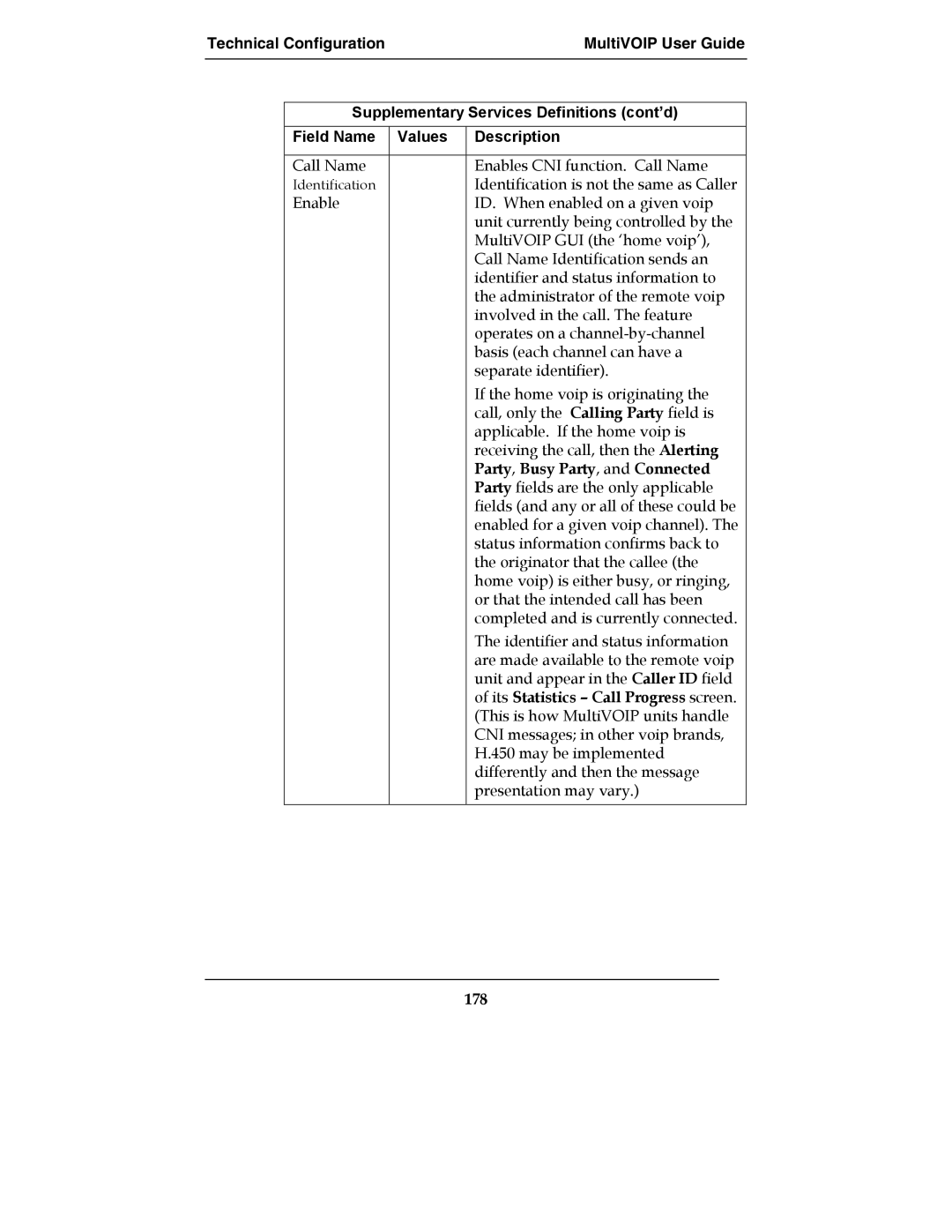Technical Configuration | MultiVOIP User Guide | ||
|
|
|
|
|
|
|
|
| Supplementary Services Definitions (cont’d) | ||
|
|
|
|
| Field Name | Values | Description |
|
|
|
|
| Call Name |
| Enables CNI function. Call Name |
| Identification |
| Identification is not the same as Caller |
| Enable |
| ID. When enabled on a given voip |
|
|
| unit currently being controlled by the |
|
|
| MultiVOIP GUI (the ‘home voip’), |
|
|
| Call Name Identification sends an |
|
|
| identifier and status information to |
|
|
| the administrator of the remote voip |
|
|
| involved in the call. The feature |
|
|
| operates on a |
|
|
| basis (each channel can have a |
|
|
| separate identifier). |
|
|
| If the home voip is originating the |
|
|
| call, only the Calling Party field is |
|
|
| applicable. If the home voip is |
|
|
| receiving the call, then the Alerting |
|
|
| Party, Busy Party, and Connected |
|
|
| Party fields are the only applicable |
|
|
| fields (and any or all of these could be |
|
|
| enabled for a given voip channel). The |
|
|
| status information confirms back to |
|
|
| the originator that the callee (the |
|
|
| home voip) is either busy, or ringing, |
|
|
| or that the intended call has been |
|
|
| completed and is currently connected. |
|
|
| The identifier and status information |
|
|
| are made available to the remote voip |
|
|
| unit and appear in the Caller ID field |
|
|
| of its Statistics – Call Progress screen. |
|
|
| (This is how MultiVOIP units handle |
|
|
| CNI messages; in other voip brands, |
|
|
| H.450 may be implemented |
|
|
| differently and then the message |
|
|
| presentation may vary.) |
|
|
|
|
